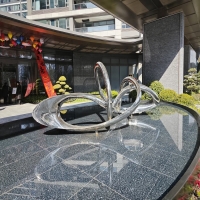Welcome to the website for landscape facilities products and knowledge.
What are the thermal conductivity properties of metal landscape tables in varying temperatures?
Metal landscape tables are popular for their durability and aesthetic appeal, but their thermal conductivity properties can significantly impact usability in varying temperatures. Metals like aluminum, steel, and wrought iron exhibit high thermal conductivity, meaning they quickly absorb and dissipate heat.
In hot climates, metal tables can become uncomfortably warm to the touch, as they efficiently transfer heat from sunlight. Conversely, in cold environments, they may feel excessively cold due to rapid heat loss. Aluminum, for instance, has a thermal conductivity of about 235 W/m·K, making it highly responsive to temperature changes. Stainless steel, while slightly less conductive (around 16 W/m·K), still reacts noticeably to ambient shifts.
To mitigate extreme temperature effects, manufacturers often use powder coatings or composite materials to insulate the surface. Additionally, tables with perforated designs or mixed materials (e.g., wood tops) reduce direct heat transfer. Understanding these properties helps consumers choose the right metal landscape table for their climate, ensuring comfort and longevity.
For outdoor use, consider shaded placements or thermal-resistant finishes to balance conductivity and practicality. By evaluating these factors, you can enjoy the sleek look of metal furniture without compromising comfort.
Related search:

Recommendation
Abstract art sculpture, stainless steel metal sculpture, large-scale water feature sculpture